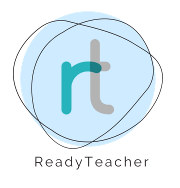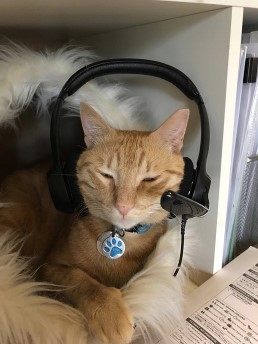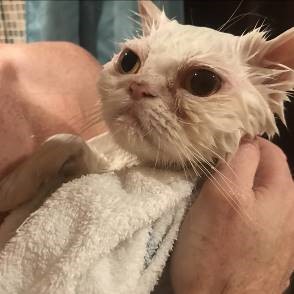The Pencil Case Challenge
Anna Hasper is a primary-trained ELT teacher and teacher development specialist currently based in Dubai. She started her teaching career in New Zealand and Australia before heading off to Jordan for the British Council and has since taught and trained around the world, but mainly in the MENA region for the BC, International House, IDP IELTS and publishers. She’s a self-confessed addict to learning and is passionate about enabling teachers to enhance effective learning in the classroom. Anna regularly presents, writes articles for MET and ETP and blogs, and delivers CELTA and Train the Trainer courses around the world. She also designs and delivers bespoke teacher training courses for her own company, TeacherTrain. Her special interests are teacher development, educational psychology and enhancing effective learning. https://pencilcasechallenge.com/
Sarah Chamberlain is an English Language teacher from Melbourne, Australia. She holds a Master of Applied Linguistics (UoM). Sarah taught English in Europe and the UK, completing her Cambridge Certificate of English Teaching to Adults (CELTA) in Barcelona as recipient of the Suzanne Furstner Scholarship from Cactus Language UK. Her industry research blog pencilcasechallenge.com features a diversity of teachers exploring teaching methodologies around the use of minimal resources. Sarah is the founder of ReadyTeacher, the ‘Freelancer.com of English language teachers’ instantly recruiting qualified teachers for cover and ongoing roles. ReadyTeacher is interested in creating equal employment and professional development opportunities for teachers of all linguistic backgrounds. Email: sarah@readyteacher.com.au, https://pencilcasechallenge.com/

Introduction to the Pencil Case Challenge
The Pencil Case Challenge is a series of interviews with selected teachers in which I explore the relationship between last-minute relief teaching and the principle of teaching with minimal resources. I wanted to find out more about their approaches to teaching spontaneously with limited class preparation time. Recurring themes across all interviews in this series include: Working with emerging language, using the learners as a key resource, and the less-is-more school of thought. Teacher development specialist Anna Hasper digs deep on the visual and minimal approach, revealing her essential elements to teaching effectively and creating connection in the classroom.
Question 1: Anna, you're going to start teaching in 20 or even 10 minutes’ time. What's on your desk or in your pencil case or on your laptop that you can grab to use in class?
There’s of course always items that you can use for a ‘show and tell’ activity. It might be a precious object like a necklace or bracelet that your students can ask questions about. But I’m passionate about photography and really enjoy taking photos when walking around new places, old towns, but also of daily life and common items. So with my online classes, if I just have to jump in in 20 minutes I’ll definitely go for images.
I’ve got cats, so I’ve got a lot of images of them on Onedrive and my phone and there are some images of them doing strange things! I’ve noticed, though, that I’m much more purposefully taking pictures now when I’m out-and-about in the streets. I often take pictures of something and I think, ‘oh, I could use this in a lesson on recycling, or repurposing things’, because I’m trying to make my students aware of the fact that caring about our environment is actually really important. So, I use personal images from my phone, as well from Pixabay, which is free, Pexels, Unsplash, and in Google you can actually go into Settings and search for images that don’t need a license.

Question 2: What are you going to do with your image once you’ve found it?
I show it to the students of course, so I usually put it on a PowerPoint slide and then it really depends if there has been a lesson plan made by someone else, or if there’s no plan. Because many images are really rich, they can facilitate language practice like asking questions and they’re good triggers for language production. Images can also encourage lower-order and higher-order thinking skills, so what I do really depends on the level of learners and how much time we have.
One of the things I like to do is show a picture of me with one of my friends. I’d say, ‘Okay, this is my friend, what would you like to ask them?’ And then once they’ve brainstormed some of those questions, I get them to think about some quirky questions, because we all know ‘What’s your name? Where’re you from?’ so I’m encouraging students to think about more unusual, complex questions. I might then model question structures, we might work on pronunciation which can be challenging with certain stress patterns. Then I might move them into pairs in the breakout rooms to ask each other those questions about their friends, so it’s more like a prompt to enable them to make that personalised conversation happen.
|
|
I often use this image as it’s… different, it’s of one of the cats we rescued in Dubai and rehoused. I ask students to come up with 3 questions they want to ask ‘Emo’ the cat. The students write down their questions, and then pass the questions on to another student, who will answer the questions in a short paragraph, narrated from Emo’s perspective. A sort of stepping in someone else’s shoes.. a great way to grow empathy for dumped house cats and an interesting writing task! |
That could be my warmer, creating a bit of a personal connection, and then I might do something with different images. It could be two images on a topic that I think is interesting for students like compare and contrast, but one activity I really like and that needs only one image (but you need to get a rich image like the ‘Prada’ image below, which has more on it than just a cat and me!) is to get the students in pairs to describe what they see, then explain what they see, and then speculate about the message the photographer is trying to convey with the image or what might happen next. I think that is really inclusive because sometimes I don’t know the students when I jump into an online lesson, and with this activity everybody can succeed in something: describing, then explaining – ‘ … because’, ‘the reason is…’, and then speculating with ‘it might well be’, ‘it’s possible that’ etc. So one image and three different kinds of questions provides you with a really effective diagnostic tool. Describe, explain, and speculate. I love that activity.
That could be my warmer, creating a bit of a personal connection, and then I might do something with different images. It could be two images on a topic that I think is interesting for students like compare and contrast, but one activity I really like and that needs only one image (but you need to get a rich image like the ‘Prada’ image below, which has more on it than just a cat and me!) is to get the students in pairs to describe what they see, then explain what they see, and then speculate about the message the photographer is trying to convey with the image or what might happen next. I think that is really inclusive because sometimes I don’t know the students when I jump into an online lesson, and with this activity everybody can succeed in something: describing, then explaining – ‘ … because’, ‘the reason is…’, and then speculating with ‘it might well be’, ‘it’s possible that’ etc. So one image and three different kinds of questions provides you with a really effective diagnostic tool. Describe, explain, and speculate. I love that activity.
|
|
One of Anna’s own images, taken in Dubai Mall one night on a walk through Fashion Avenue! A fabulous image for ‘Describe- Explain- Speculate’ |
‘You're getting a really good diagnostic tool by just one image and three different sorts of questions: Describe, explain, and speculate. I love that activity.’
(Large quote)
Question 3: How important are tools/resources in delivering a last-minute class? Can having minimal resources make a class better?
Looking at the face-to-face classroom and online, I think that the pedagogy is practically the same. So I would say, having something – it could be a very small item, it could be an image, it could be dice or a deck of cards – that can be an immediate stimulus for the students to start thinking, practising or producing language is helpful. It’s quite nice if you have something that you can use as a prompt, so it’s not just you talking, or going completely dogma because that could be a challenging approach for teachers. So when you have one image and it’s a rich image, it can be the stimuli for the students to actually start using their own language, which means you can gauge what level they’re at and what you can work on next so it’s a trigger for language, and for you, an opportunity to respond to their emerging needs.
‘It's quite nice that you have something that you use, not just you (the teacher) talking, or going completely dogma approach because that's very challenging for teachers as well.’
(Big quote)
I think if you want to deliver student-centred teaching and be really responsive to their needs, it can definitely be better to have less resources, but you have to be very attentive as a teacher to pick up on what you want to work on with the lot. So I do think you need to have some skills here as a teacher to diagnose on the spot and also have language input available to offer to your students, to feed- in and feed forwards. But yes I would say so, you can really exploit what they give you and build on that. I remember the days that I walked into the classroom with my eight photocopies and still thinking I’m not sure if I have enough, I mean that’s what you hold onto after CELTA, right? And is it based on student needs? No, it’s based on what’s in a random text book.
‘It can definitely make it better having less resources, but you have to be very attentive as a teacher to pick up on what you want to work on’ (Big quote)
Question 3a: What happens if you're teaching an IELTS program, you know you've got a strict syllabi in terms of content, practice tests and so forth. How can you maintain a minimal-resources approach or let the students give you that direction? Can you or not?
I think you have to exploit the resources you have. If we go back to that image that you are bringing to the lesson, you have to exploit that image in a certain way, and with the questions you ask you can prompt students and maybe trigger certain language use, if you’re working on certain language. I know that a lot of IELTS courses do a lot of practice tests, but I’m a firm believer that students first need to have a solid foundation of the language, which is grammar and vocabulary. So if I know that the listening is going to be on a certain topic, I might bring an image in that we help build vocabulary before, and I’ve noticed that a lot of my students still need to work on present perfect – that seems quite a common issue in this region. So I’ll ask the sort of questions that are going to trigger that specific language point and if it doesn’t come out, well then that’s my opportunity to feed it in! But of course when you teach IELTS, it’s much harder because the students do want to practice those reading texts and listening and you can’t really do that with a minimal resource, right?
I’m very much the annoying teacher there, like shattering your dreams in session one – like first of all, I don’t think it’s realistic in six weeks to go two IELTS band scores up. Secondly, it’s great practicing these tests but we need to build that language foundation because, honestly, there are no tricks to getting an IELTS band score 7 or above: you really need to show that variety in language, that paraphrasing, appropriately and with accuracy. So let’s start there, and then we can practice the skills on the side, I mean you need the systems before you can develop the skills. Students don’t always like that message, nor do my teachers that I train for IELTS, but I think it’s true. The only way to get that automaticity for language and also the automaticity in receiving the language is when you have that language as easy retrieval, that grammar and that vocabulary, otherwise you’re translating, and your brain gets lost.
I'm very much the annoying teacher there, like shattering your dreams in Session One - like first of all, I don't think it's realistic in six weeks to go two IELTS band score up’ (Big quote)
Question 4: Do you generally work to a minimal resource class plan, or are you a collector of teacher tools?. If you are a collector, what is the item that you've made the most use of in your career as a teacher?
In the classroom there’s two things I use an awful lot: sticky notes, I love sticky notes because there’s so much you can do with it, and mini whiteboards. For me, a mini whiteboard is just like a plastic sleeve with a bit of paper on the inside and you can just write on the plastic (with whiteboard markers). So, when I started teaching online, I’m like ‘oh my god, no sticky notes,’ but then I started using Jamboard and Padlet, or Pinup (it’s a new site, it’s actually the same as Padlet but it’s completely free). Using sticky notes is a really nice way to start a story, with one sentence and all my students have to pin their ending to that story on different sticky notes or mini whiteboards.
For the online version of the mini-whiteboards, I’ve gone to Whiteboards.fi. It’s a great tool for formative assessment, as all learners have their own whiteboard on the screen. Particularly when I work with Arabic speakers, spelling is a challenge so we do word activities as a whole class but students write on their own whiteboard, now as a teacher you can see all the whiteboards so I can actually see who’s got the spelling right or not yet. So I’ve sort of converted to these tools in the online classroom instead of stickies and physical MBWs, that are my life in the face-to-face classroom.
Question 5: What would be your advice for relief teachers regarding the use of limited prep time in a last-minute situation?
I think we all have some activities that we love and that we’ve just got up our sleeve, you know, very simple activities, and many of them you can still do online if you think creatively. You can say, okay, depending on what level the class is, ‘Write down five adjectives, other than happy, with the same or similar meaning and compare’, so that’s a really simple task. And find some activities that you can bring in, but I honestly think if you are a bit more experienced, see what you can get from the students ‘cause they are such a huge resource – they’ve got their own stories and narratives. Try to use their lives and their ideas and build on that and exploit it. A very simple activity is you get them to talk about an item or a person – ‘who’ and ‘which’ might come up at that level – so you might just want to revise the rules and then they can interview somebody and use that language again in the questions and answers. Use the students as a resource and build your lesson on what they give you and still need, but I don’t know how easy that is if you’re fresh off the CELTA course.
There’s a couple of reading texts that I’ve done in the past from the old Cutting Edge or English file as I just loved the topics – I’m fascinated by the brain and engagement – so I’ve just sort of re-typed them and designed tasks that I’ve created myself and I just bring those in. And based on the response you get to the text, you can do vocabulary building; pulling words out of the text, or you can actually go into a grammar or functions lesson and even doing a follow up writing task based on the genre to the text, or a response. Lots of options! So maybe select two texts that you love and can talk about and get the students interested in.
In the classroom, I think engagement is really important, and particularly when you teach online – I’ve been experimenting with an activity that’s not even a warmer – I call it a connector activity, ‘What’s the most exciting thing that happened to you this week in COVID lockdown?’, and quite often the students say, ‘There was nothing, there was nothing’ but then there will be something, there was a pigeon sitting on the balcony that got chased by the cat or something and then another person might say, ‘oh, I saw this happening in my backyard etc’. So I think really getting that personal connection going is the start! There’s a lot of language but also a lot of positive vibes and connections that come out of just being human so they’re actually ready for learning. They’re willing to contribute, they’re happy to communicate – really establishing that human connection would be my key thing when you teach online.
I usually open my classroom 5-7 minutes before we start, and have a photo up usually about what has happened to me, an event, or something I cooked or my cats and my students know the drill by now – the question is on the next slide, and then they can start talking together while we’re waiting for some of the others, and just focus on each others’ life stories because I think we don’t see that many people at the moment, so being able to actually connect to others, emotionally, it’s not only important for mental health but also to get that classroom community happening, because there is a distance. I’m there, the slide is up, they’re having a chat, and then some student asks, ‘So what’s this picture?’ and then I explain what happened in my life, the most exciting thing or the most surprising thing and then they start talking in an open-class chat. And then about seven minutes in we’re like okay it seems everyone’s here now and then we start.
We don't see so many people at the moment, being able to actually connect to others, emotionally, it's not only important for mental health but also to get that classroom community happening, because there is a distance. (Big quote)
I believe good teaching is not about technology, it’s about the four C’s: I believe it’s all about that connecting, communicating, giving them some control in their learning process and providing the right level of challenge in your classroom because if that’s not there, nothing is going to happen.
In the online classroom, I definitely think there’s a need for more flipping and being away from the screen. Like ‘I want you to go and walk to the fridge and pick one thing out of there that you really don’t like.’ Or because they don’t go shopping often during COVID-19, it’s really interesting if they have to find something in their house they were gifted -maybe one they really wouldn’t buy themselves and show us. Q quick ‘Show and tell’ is so good because they can move their body for a few minutes walking around, otherwise it’s too much focus on that screen. And it’s engaging to hear each others’ stories. Normally, I have like 4.5 hours a day with my students, so we’ll be doing two hours of flipped-tasks, they do on their own that we set up together, and then we have maybe an hour and a half with the whole class on Zoom, and half an hour for some individual chats here and there in private break-out rooms to support them as needed. I think that’s a much more realistic model for our brain as online learning is so tiring.
Further reading
Using images with young learners
Brain-friendly teaching: here and here
Related webinars
Do you know what it takes to advance your students’ learning?
Engaging teens: It’s not all about technology
Learning for themselves: Putting the learner in the driver’s seat
Please check the The Art and Skills of the Humanistic Teacher Trainer course at Pilgrims website.
The Pencil Case Challenge
Anna Hasper, Australia;Sarah Chamberlain, AustraliaDigressions of a Tentative Teacher Trainer…
Sandra Pitronaci, Australia

